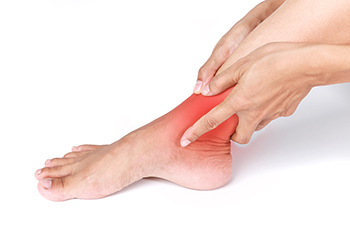6650 Frankford Ave
Philadelphia, PA 19135

If you experience pain in your ankle and there is no obvious reason for it, you might feel perplexed. Among other things, ankle pain can result from arthritis, an autoimmune condition, fallen arches, or an underlying cause you are unaware of, or does not seem to be connected to the ankle. With osteoarthritis, the cartilage that cushions two bones erodes causing the bones to rub together. With rheumatoid arthritis, the body’s immune system attacks healthy tissue, including the lining of ankle joints. Reactive arthritis is when a bacterial infection in another part of the body triggers an arthritic response in other parts of the body, like the ankle. All types of arthritis can cause the ankle to feel painful, stiff, swollen, or tender. Fallen arches are when the tendons supporting the arches of the feet get damaged and can also cause ankle pain. The best treatment for unexplained ankle pain will be based on its root cause. Do not hesitate to reach out to a podiatrist for a proper diagnosis and treatment.
Ankle pain can have many different causes and the pain may potentially be serious. If you have ankle pain, consult with John M. Fanelly, DPM from Northeast Philadelphia. Our doctor will assess your condition and provide you with quality foot and ankle treatment.
Ankle pain is any condition that causes pain in the ankle. Due to the fact that the ankle consists of tendons, muscles, bones, and ligaments, ankle pain can come from a number of different conditions.
Causes
The most common causes of ankle pain include:
Symptoms
Symptoms of ankle injury vary based upon the condition. Pain may include general pain and discomfort, swelling, aching, redness, bruising, burning or stabbing sensations, and/or loss of sensation.
Diagnosis
Due to the wide variety of potential causes of ankle pain, podiatrists will utilize a number of different methods to properly diagnose ankle pain. This can include asking for personal and family medical histories and of any recent injuries. Further diagnosis may include sensation tests, a physical examination, and potentially x-rays or other imaging tests.
Treatment
Just as the range of causes varies widely, so do treatments. Some more common treatments are rest, ice packs, keeping pressure off the foot, orthotics and braces, medication for inflammation and pain, and surgery.
If you have any questions, please feel free to contact our office located in Philadelphia, PA . We offer the newest diagnostic and treatment technologies for all your foot care needs.